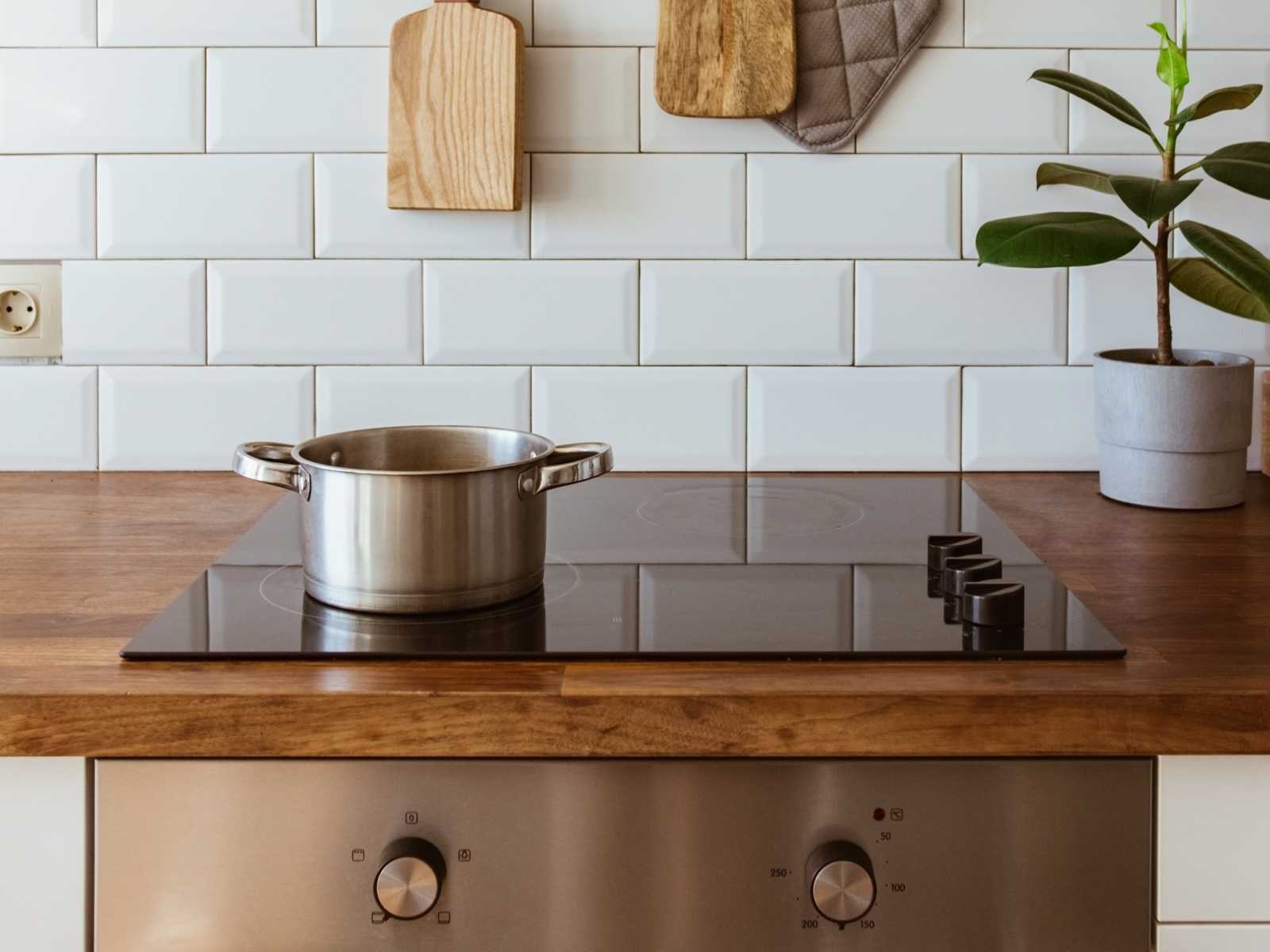How Much Does an Induction Stove Cost?
By Kevin Purdy

Table of contents
Real costs, from people who bought them
Average cost of an induction stove
Real costs, from people who bought them
Induction stoves are becoming more popular, as more people look at removing gas from their home. Up to one-third of people plan to consider induction for their next range.
But only having had two real options for decades, people might wonder how much a switch to induction really costs. So we asked homeowners who took the induction leap to look up their receipts and share how much it costs to install their stoves. We also priced out the best-selling and most well-reviewed induction stoves at appliance stores.
Here’s what 90 recent induction stove buyers told us it cost them to buy and set up their induction stoves and ranges.
Average cost of an induction stove
Among the 90 people who responded to our survey, the average cost of their induction stove was $2,231. They ranged in price from $600 to $9,200, though only four of them cost more than about $4,000.
Induction prices
We surveyed the best-selling models at Home Depot, Lowes, and Best Buy, and priced out the best-reviewed models on editorial review sites. We saw a price range of roughly $1,100 to $4,400 for the most popular models.
| Brand | Model | Size | Price |
| Frigidaire | GCRI3058AF | 5.4 cu. ft. | $1,100 |
| Samsung | NE63B8611 | 6.3 cu ft | $1,800 |
| KitchenAid | KFID500ESS | 6.7 cu. ft. | $2,900 |
| Cafe | CHS90XP2MS1 | 5.7 cu. ft. | $4,400 |
| LG | LSE4617ST | 6.3 cu. ft. | $3,800 |
There’s a noticeable jump between standard models costing as little as $1,100, and feature-rich models costing $3,000 or more. The higher-priced models tend to have the knobs that some cooks strongly prefer to touch-sensitive controls.
Electrical work and installation
Many homes that were built with gas stoves don’t have the proper electrical wiring for induction stoves. So we asked a few questions about the cost of electrical work.
Among those we surveyed, only 15 people (about 16%) said they had to upgrade their electrical panel, and 11 of them did so as part of a larger remodel or construction project.
39 people (43%) had a new 220-volt outlet installed and wired for their stove, but it was part of a larger project for 20 of them.
Unsurprisingly the percentage of homeowners that had to pay for electrical work was higher among those switching from gas stoves than traditional electric. 59 people (65%) that switched from gas had to pay for electrical work. By comparison, only 4 (13%) people that switched from a traditional electric stove had to pay for electrical work.
The average cost for all the electrical work was $987 among homeowners that had to pay for this work.
Some noted that their induction stove was part of a wider project to upgrade their electrical systems. For example, one homeowner wanted to “Bring a 1950s kitchen up to code”. A handful of people were making room for not just an induction stove, but also rewiring for an electric vehicle charger. One respondent planned to replace their furnace and hot water heater, presumably with a heat pump and hybrid water heater.
Rebates (or lack thereof)
Only three of our 90 respondents reported receiving rebates for their induction stove upgrade: $300, $380, and $600, for stoves that were relatively expensive.
We didn’t ask where they received rebates, but given the lack of rebates available for switching to induction, we assume these came from the manufacturers, not government programs.
Satisfaction and motivation
We also asked people how happy they were with their induction stove, and what motivated them to switch from what they had before. Their responses, on a scale of 1-10, averaged 9.25.
So why did the homeowners we surveyed choose to buy an induction stove?
Cooking performance
- “Boils water quickly + very fine-grain control of heat”
- “Easy to clean, fast heating, good looking, has an air fryer and convection baking in oven”
- “We have a family that cooks, and small children. No way would I let my daughter cook on a gas stove. [Induction has] little heat transfer to the glass (while it gets hot, it’s not that hot).”
Indoor air quality
- “Better control, better air quality, safer, push the technology forward”
- “Did not want new gas stove due to excessive heating in the kitchen and poor indoor air quality”
- “Indoor pollution—kids.”
Sustainability
- “First step to get natural gas out of my new construction”
- “Last thing to electrify whole house, now have to remove gas meter”
- “Stop burning natural gas inside the home”
Is induction worth the cost?
Compared to a gas stove, induction is safer, healthier, and easier to clean. Gas cooking has been shown to increase the risk of asthma in children by 42%.
Gas stoves are also bad for the environment. The methane that leaks from gas stoves every year—just the functioning stove, not any gas lines—has the same emissions potential as 500,000 gasoline-powered cars on the road.
For most homeowners deciding between an induction versus electric stove, it’s really a question of how much you’re willing to pay for a better cooking experience.
Many professional chef’s love induction stoves. But the reality is that many people either don’t cook that much, or don’t really care about the performance of their stove.
So if money’s tight, and the idea of a more responsive cooktop doesn’t speak to you, we recommend going with a traditional electric stove. Otherwise, splurge and get the induction stove.
But whatever you do, don’t install another gas stove. Electrifying your home, with as many efficient devices as possible, helps move us all closer to a world without fossil fuels. And that’s a world we can all aspire to.


